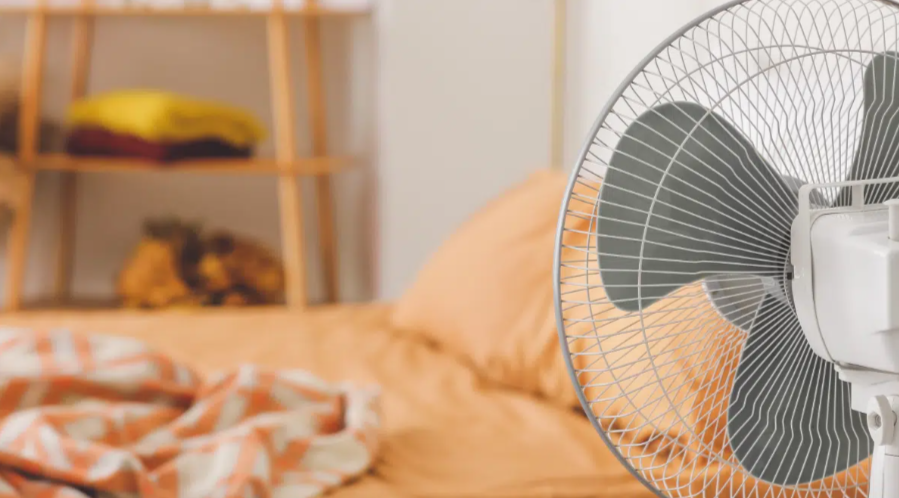1. Close blinds and curtains during the day
Sunlight streaming through windows can significantly heat up your home. Close blinds or curtains during the hottest parts of the day (usually from noon to 4 PM) to block out the sun’s rays. Consider using reflective or thermal curtains for additional insulation.
2. Use fans strategically
- Ceiling fans: Set ceiling fans to rotate counterclockwise in the summer to create a breeze that cools the room.
- Cross-ventilation: Open windows on opposite sides of your home to create a cross-breeze. Position a fan facing one window to push hot air out and another to pull cool air in.
- Box fans: Place box fans in windows to expel hot air, or use them to circulate cool air through the house.
3. Cook outside or use a slow cooker
Avoid using your oven or stovetop during the hottest parts of the day, as these appliances can increase indoor temperatures. Instead, cook outside on a grill, or use a slow cooker or microwave, which generate less heat.
4. Switch to LED bulbs
Traditional incandescent bulbs give off a lot of heat. Replace them with energy-efficient LED bulbs, which produce much less heat and use less energy overall.
5. Seal gaps and insulate
Gaps around windows and doors can let in hot air from outside. Ensure these are properly sealed with weatherstripping or caulking. Also, insulating your attic can keep the heat from transferring into your living spaces.
6. Use cold water to cool down
Fill a spray bottle with cold water and mist yourself, or place a bowl of ice in front of a fan to cool the air. You can also apply cold compresses to pulse points like your wrists or neck to help bring down your body temperature.
7. Switch to lightweight bedding
Heavy blankets and sheets can trap heat. Opt for light cotton sheets, which breathe better and help keep you cool at night. A lightweight fan by your bed can also keep the air moving for a more comfortable sleep.
By combining several of these methods, you can maintain a cooler environment without relying on an air conditioner.






